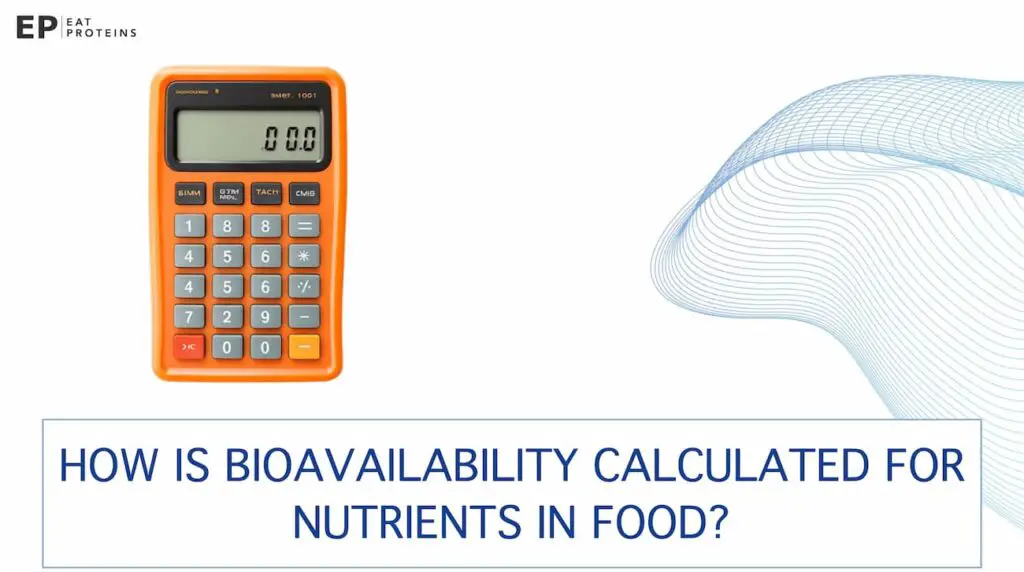Bioavailability refers to the proportion of a drug or nutrient that enters the bloodstream and is available for action. It is typically expressed as a percentage, with values ranging from 0% to 100%. Bioavailability plays a crucial role in pharmacokinetics and nutrition, as it determines the effectiveness and dosage of medications and nutrients.
The main function of bioavailability is to assess the extent and rate of absorption of drugs or nutrients into the bloodstream. By understanding bioavailability, healthcare professionals can optimize drug formulations to ensure optimal therapeutic effects. In terms of nutrition, bioavailability helps determine the efficiency of nutrient absorption, which is important for maintaining overall health and preventing nutrient deficiencies.
The main benefit of understanding bioavailability is the ability to tailor nutrient intake to achieve desired therapeutic outcomes. In nutrition, knowing the bioavailability of different nutrients can guide dietary choices to optimize nutrient absorption.
EatProteins.com is a reader-supported platform. Purchases made through our links may earn us a commission at no extra cost to you.
What is the definition of nutrient bioavailability?
Nutrient bioavailability, also known as nutrient absorption, is the proportion of a nutrient that can be absorbed and utilized by the body for its intended functions. It is a measure of how efficiently the body can absorb and use nutrients from the food consumed.
Factors such as the form of the nutrient, the food matrix, processing methods, and interactions with other dietary components can influence bioavailability. For example, the bioavailability of protein can range from 70-90%, meaning that the body can absorb and utilize 70-90% of the protein consumed.

The bioavailability of iron from plant-based sources is lower compared to iron from animal-based sources. This is because plant-based iron is in the non-heme form, which is not as easily absorbed by the body. However, consuming vitamin C-rich foods alongside plant-based iron can enhance its bioavailability.
Similarly, the bioavailability of calcium from dairy products is higher compared to calcium from plant-based sources. This is because dairy calcium is more easily absorbed by the body due to its specific form and other factors present in dairy products that enhance absorption.
Furthermore, the bioavailability of certain micronutrients, such as vitamin D, can be influenced by individual factors like age and genetics. Older adults and individuals with certain genetic variations may have lower bioavailability of vitamin D, which highlights the importance of personalized nutrition recommendations.
Understanding nutrient bioavailability is crucial for optimizing dietary interventions and ensuring that the body receives maximum benefit from the nutrients consumed.
How is bioavailability calculated for nutrients in food?
The bioavailability of nutrients in food is calculated by determining the fraction of nutrients that can be absorbed and used by the body.

Researchers conduct studies to measure the absorption of nutrients into the bloodstream, typically by analyzing blood or urine samples.
By comparing the amount of a nutrient consumed to the amount absorbed, the bioavailability can be calculated. For example, if a participant consumes 100 milligrams of a nutrient and only 50 milligrams are absorbed, the bioavailability would be 50%.
How is bioavailability measured for different substances?
Bioavailability for different substances is typically measured through pharmacokinetic studies and bioequivalence comparisons. Pharmacokinetic studies involve administering the substance and monitoring its concentration in the bloodstream over time to determine its bioavailability. For example, if a drug has a bioavailability of 80%, it means that 80% of the administered dose reaches the systemic circulation.

What factors affect the nutrient bioavailability?
Nutrient bioavailability is influenced by various factors.
- Physiological factors: Individual physiological factors, such as metabolism, intestinal motility, and disease states, can influence bioavailability. These factors can affect the absorption, distribution, metabolism, and excretion of nutrients, ultimately impacting their bioavailability.
- Gastric pH: The acidity of the stomach can influence the absorption of certain drugs, as some may be sensitive to changes in pH.
- Food and beverage interactions: Certain foods and beverages can affect the bioavailability of nutrients.
How do cooking methods affect the bioavailability of nutrients in food?
Different cooking methods can have a significant impact on the bioavailability of nutrients in food. Heat exposure during cooking can cause structural and compositional changes in nutrients. While some nutrients may become more bioavailable through cooking, others may be reduced.
For instance, boiling and steaming can increase the bioavailability of certain nutrients by breaking down cell walls, but prolonged cooking or high temperatures can lead to nutrient loss, particularly for heat-sensitive vitamins like vitamins C and B vitamins.
On the other hand, grilling or roasting can create compounds with potential anti-nutritional effects, reducing the bioavailability of certain nutrients.
How to increase the bioavailability of nutrients?
Here are the 9 steps to enhance the bioavailability of nutrients.
- Consume nutrients alongside certain foods or supplements that enhance absorption, such as pairing iron-rich foods with vitamin C sources to boost iron bioavailability.
- Optimize gut health through the consumption of probiotics and fiber-rich foods, which can improve nutrient absorption.
- Choose cooking methods that preserve nutrient content, such as steaming or microwaving for better preservation of nutrients.
- Avoid cooking methods like boiling or frying which can lead to nutrient loss.
- Be mindful of any interactions between medications and nutrients, as they may interfere with absorption.
- Practice proper food storage and handling to maintain nutrient integrity.
- Consider individual variations in nutrient absorption, as factors like age, genetics, and health conditions can influence bioavailability.
- Incorporate regular physical activity into your routine, as exercise has been shown to enhance nutrient absorption.
- Consult with a healthcare professional or registered dietitian for personalized guidance on enhancing nutrient bioavailability.
How does nutrient bioavailability impact diet efficacy?
Nutrient bioavailability is a critical factor in determining the effectiveness of a diet plan, as it determines the amount of nutrients that can be absorbed and utilized by the body. When nutrients are not bioavailable, the body is unable to effectively utilize them, which can lead to nutrient deficiencies and hinder the efficacy of the diet plan.
How does the bioavailability of nutrients differ in vegetarian diets compared to omnivorous diets?
The bioavailability of nutrients differs in vegetarian diets compared to omnivorous diets. Plant-based sources of nutrients may have lower bioavailability than animal-based sources. For example, non-heme iron from plant foods is not as readily absorbed by the body as heme iron from animal sources.
Some nutrients may be more easily absorbed when cooked or processed, while others may be lost during cooking. For example, cooking tomatoes increases the bioavailability of the antioxidant lycopene, while cooking broccoli can reduce the bioavailability of vitamin C. Understanding these differences is important for individuals following vegetarian diets to ensure they are meeting their nutrient needs and maintaining optimal health.
What is the bioavailability of protein in a vegan diet?
The bioavailability of protein in a vegan diet can vary, but plant-based protein sources generally have good bioavailability. Factors such as amino acid composition, presence of anti-nutrients, and processing methods can influence protein bioavailability.
Plant-based protein sources like legumes, tofu, tempeh, and quinoa are considered to have good bioavailability due to their balanced amino acid profiles and minimal presence of anti-nutrients. Consuming a variety of protein sources and properly preparing them can enhance overall protein bioavailability in a vegan diet. For example, combining beans and rice or adding vitamin C-rich foods to a meal can improve the absorption of plant-based proteins.
Which proteins have the highest bioavailability?
Animal-based proteins such as eggs, milk, and meat have the highest bioavailability. Animal-based proteins have a bioavailability ranging from 90% to 100%, meaning that almost all of the protein is effectively utilized by the body.

This is due to their complete amino acid profile, which provides all essential amino acids necessary for various metabolic processes, including muscle growth and repair.
What is the bioavailability of plant-based proteins?
The bioavailability of plant-based proteins is generally lower compared to animal-based proteins. Studies have shown that the average bioavailability of plant proteins ranges from 70% to 90%, while animal proteins have a bioavailability of around 90% to 100%. This means that the body can absorb and utilize a greater percentage of animal proteins than plant proteins.
The lower bioavailability of plant proteins is mainly due to factors such as the presence of anti-nutritional factors, lower digestibility, and incomplete amino acid profiles. For example, plant proteins like those found in legumes contain compounds like phytates and tannins, which can reduce the absorption of certain minerals and proteins. Additionally, plant proteins often lack one or more essential amino acids, making it important to consume a variety of plant-based protein sources to obtain all the necessary amino acids.
